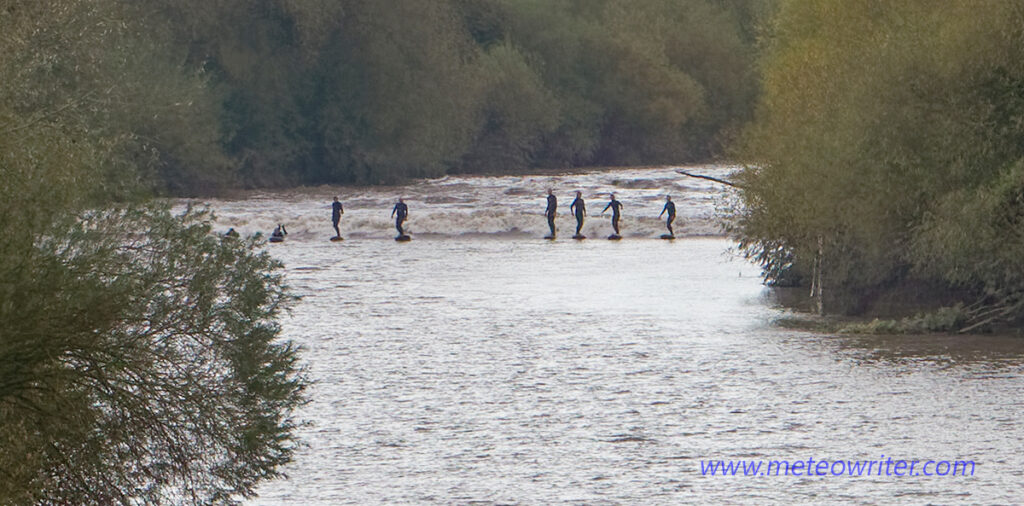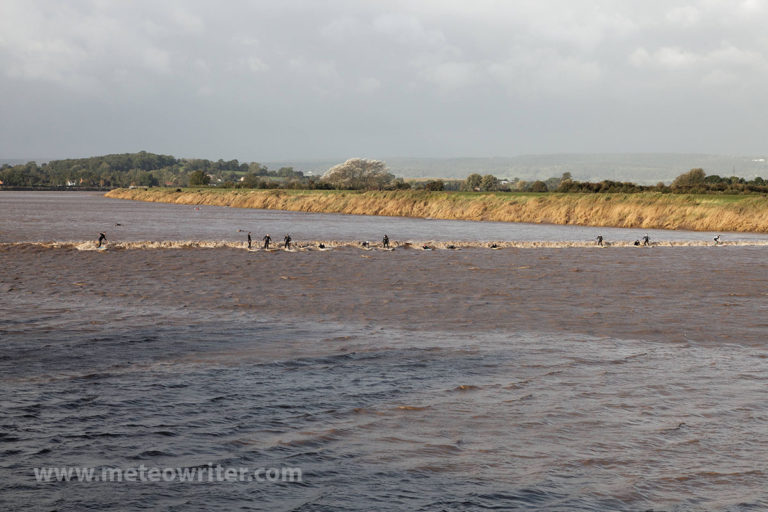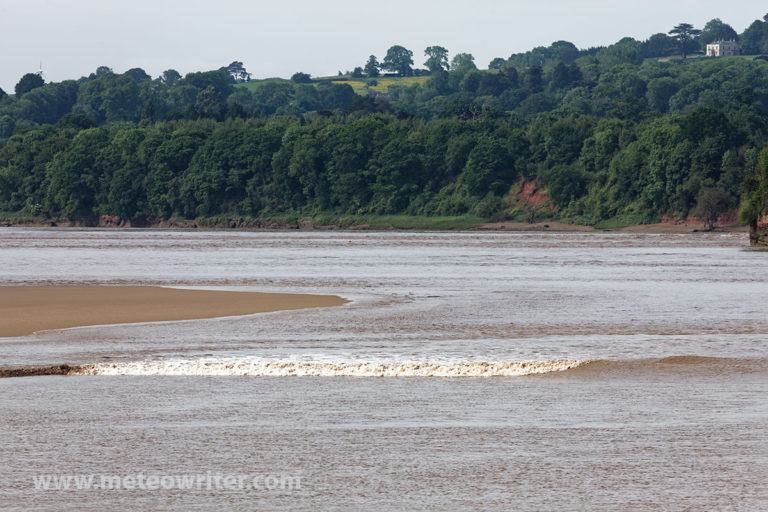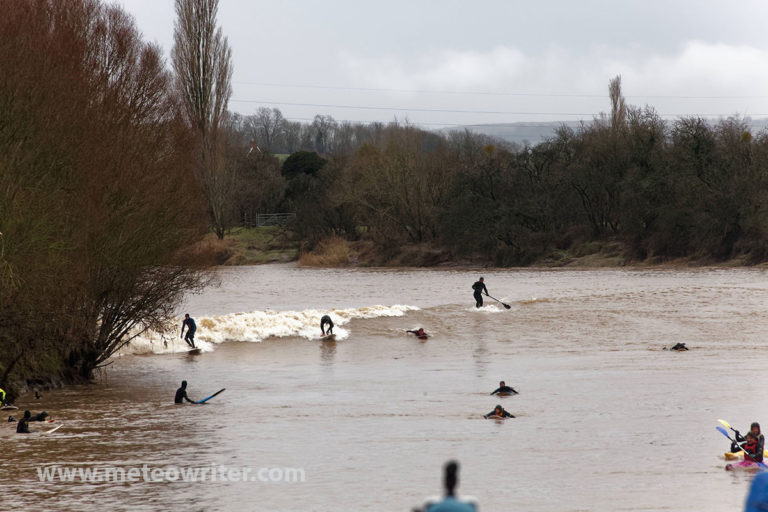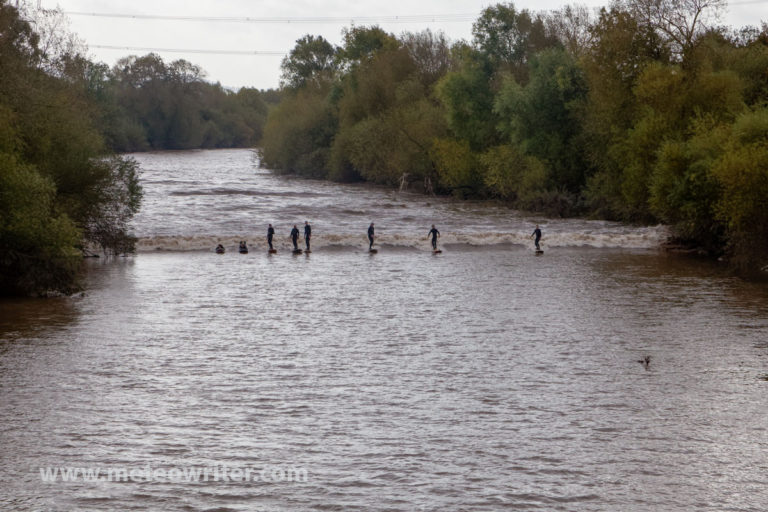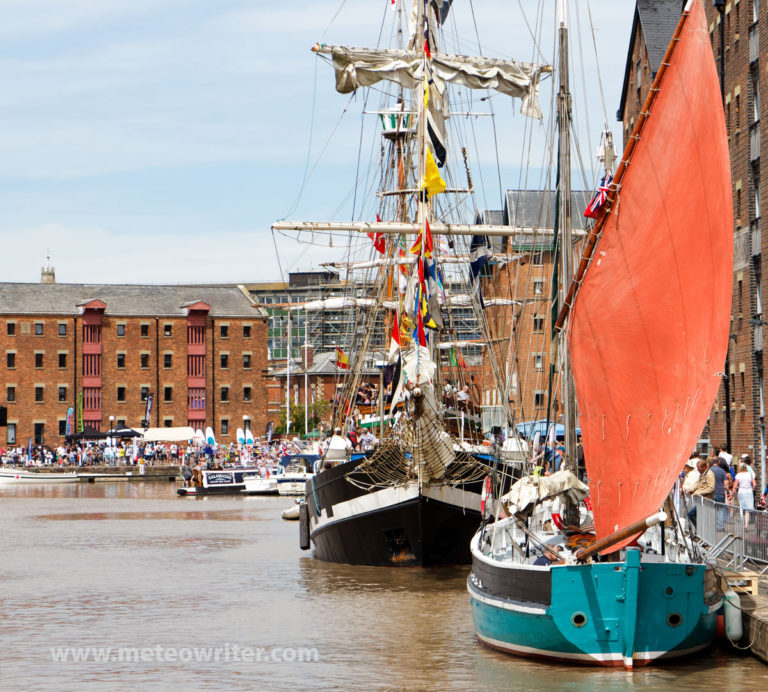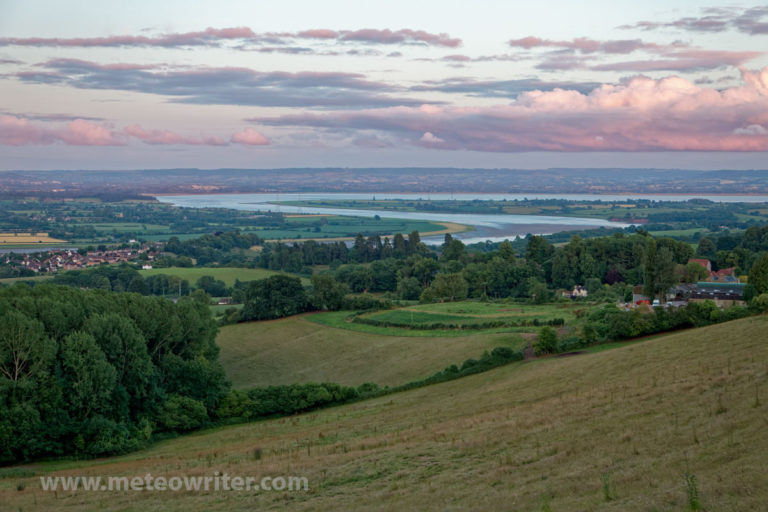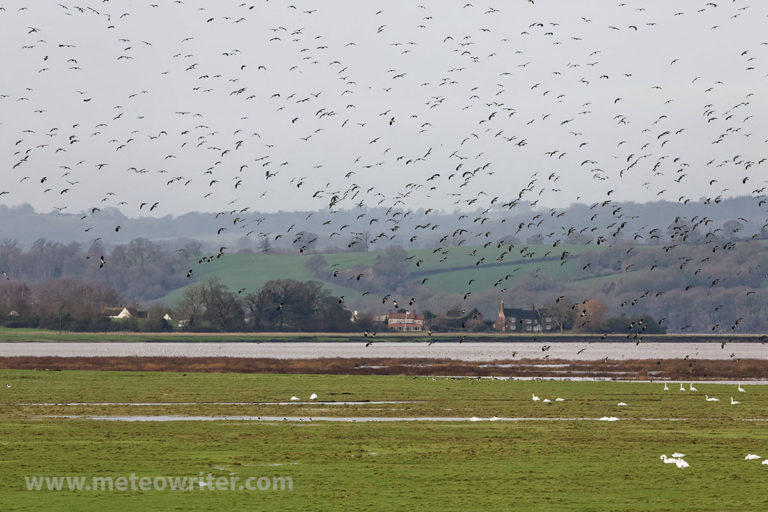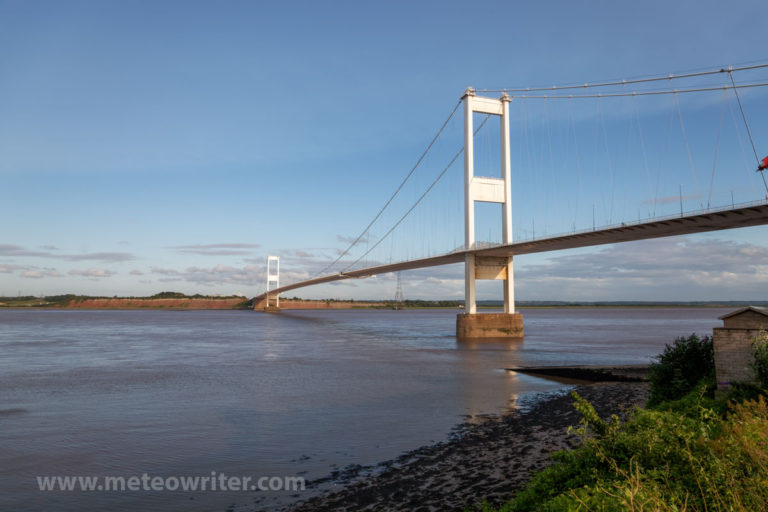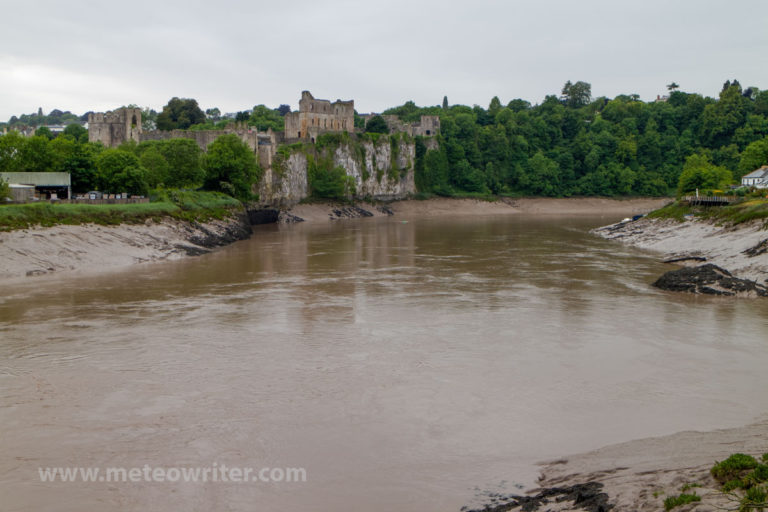The Severn Estuary begins near Gloucester and ends close to Cardiff to the north and Weston-super-Mare on the opposite shores. It is home to one of the best known tidal bores in the world, the Severn Bore, but what causes it and when and where to see it?
In the best conditions the leading wave can reach heights of more than two metres and speeds of more than 10mph and large numbers of surfers and canoeists turn out to try their luck. It was the birthplace of tidal bore surfing, with the first attempt in 1955 by a former wartime commando leader, Colonel ‘Mad Jack’ Churchill. The record for a continuous ride stands at more than seven miles by surfing enthusiast Steve King.
The surge is so powerful because the estuary has one of the highest tidal ranges in the world, second only to the Bay of Fundy in Canada. The range can exceed 15m on the highest tides and remains high into the Bristol Channel.
In the best conditions, the Severn Bore begins about four miles upstream of Sharpness, near the villages of Awre and Frampton on Severn. This is in a treacherous part of the estuary, known as the Noose, where standing waves are a particular hazard. On rare occasions it has been sighted further downstream, near Lydney Harbour, on the opposite shore to Sharpness
It ends on hitting Maisemore Weir more than twenty miles upstream and is occasionally reflected and returns a short way downstream in much weakened form, sometimes with a low line of surf. The only other UK tidal bore that is reflected is the Mersey Tidal Bore.
The main wave typically takes almost two hours to reach Maisemore but on some days may only form in the estuarine or riverine parts of the estuary. The best chances tend to be around the highest tides of the year, in March and September and a month or two either side. Much depends on river flows and wind speeds, directions and air pressure offshore and the Gloucester Harbour Trustees suggest that the following conditions may affect the tidal bore:
Low pressure and SW winds can increase the size of the wave and speed it up making it arrive earlier. The reverse is true with high pressure and northerly winds. Fresh water levels affect the height of the wave significantly. Lots of rain can make the wave in the estuary end of the river, near Newnham, bigger. But it will then be too deep upstream to produce a wave. Conversely, low water levels can diminish the estuary wave but produce impressive clean faces upstream.
The Trustees are the navigation authority for this part of the estuary and this quote is taken from a document available to download from their website.
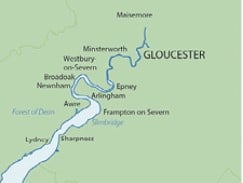
Popular viewpoints include Newnham, Broadoak, Arlingham and Epney in the more estuarine area and Minsterworth, Stonebench, Over Bridge and Maisemore further upstream
Further information can be found on the following two enthusiasts websites, including a ‘prospect’ rating based on tidal conditions on the first of these:
- The Severn Bore: a natural wonder of the world
- The Severn Bore: surfers and spectators
As when viewing other tidal bores, it is important to park considerately, keep to rights of way and look out for your own safety. The Gloucester Harbour Trustees provide the following safety advice for spectators:
People on the bank should be wary of standing too close to the edge of the bank. The wave can cause water levels to rise sharply as it passes and give the unwary a soaking or even knock them off their feet in extreme cases. The river levels can remain high for some time after the wave passes. Spectators and their vehicles have occasionally been cut off by rising waters necessitating rescue by the police. People should never be tempted to walk out on to exposed sandbanks as the surface is often soft and mud-like and they risk becoming stuck in quicksand as the wave approaches.
The Trustees also publish a document with advice for surfers and other water users; potential hazards include soft sand, quicksand, submerged rocks, outcrops and hidden structures.
For more information on what causes the Severn Bore and other tidal bores, and when and where to see it and others around the UK, I say more in the following two books: see this link for more information.

The following gallery also shows more photographs of the Severn Bore; just click on a photograph to see images in a larger size:
